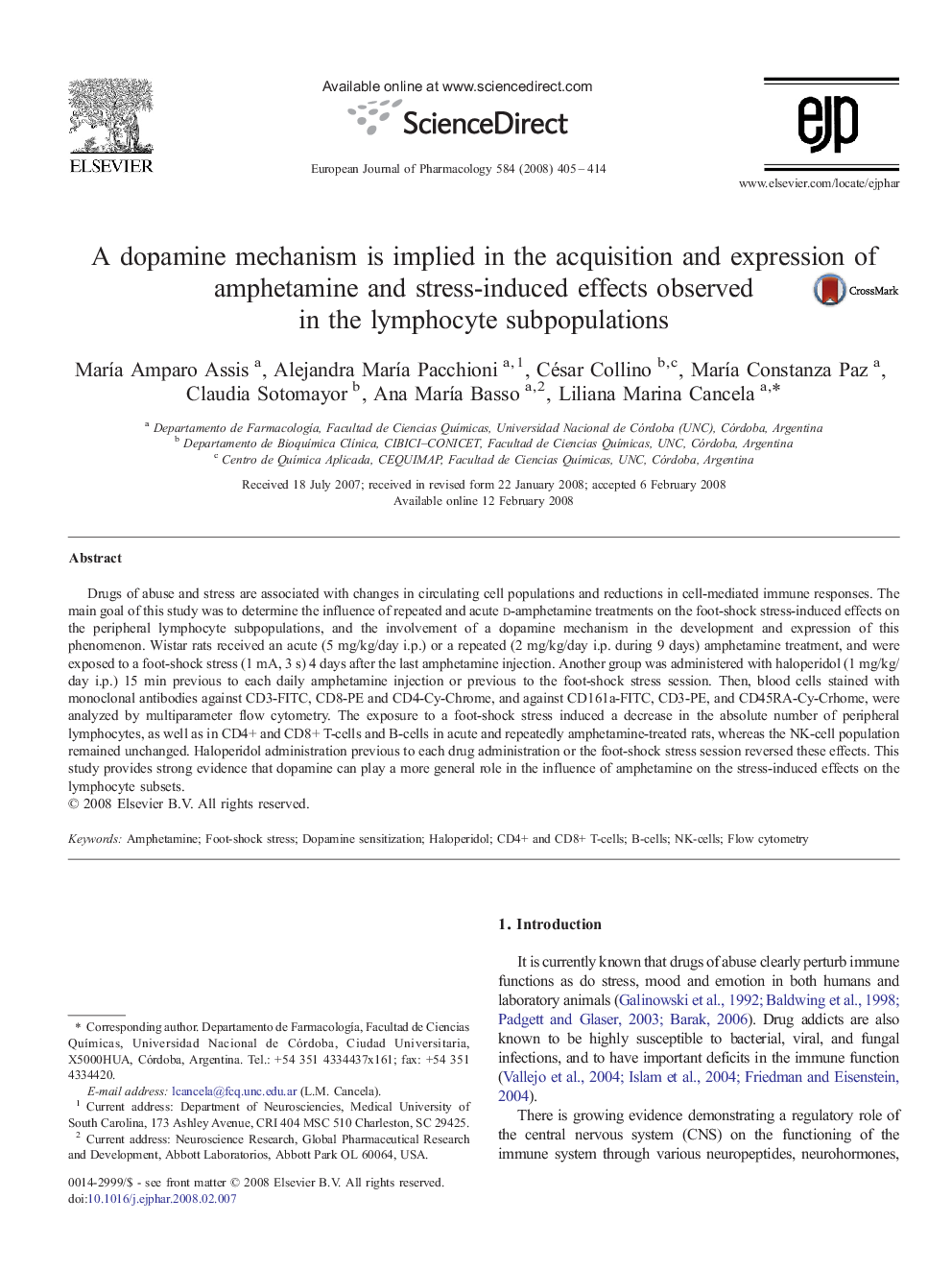| Article ID | Journal | Published Year | Pages | File Type |
|---|---|---|---|---|
| 2535395 | European Journal of Pharmacology | 2008 | 10 Pages |
Drugs of abuse and stress are associated with changes in circulating cell populations and reductions in cell-mediated immune responses. The main goal of this study was to determine the influence of repeated and acute d-amphetamine treatments on the foot-shock stress-induced effects on the peripheral lymphocyte subpopulations, and the involvement of a dopamine mechanism in the development and expression of this phenomenon. Wistar rats received an acute (5 mg/kg/day i.p.) or a repeated (2 mg/kg/day i.p. during 9 days) amphetamine treatment, and were exposed to a foot-shock stress (1 mA, 3 s) 4 days after the last amphetamine injection. Another group was administered with haloperidol (1 mg/kg/day i.p.) 15 min previous to each daily amphetamine injection or previous to the foot-shock stress session. Then, blood cells stained with monoclonal antibodies against CD3-FITC, CD8-PE and CD4-Cy-Chrome, and against CD161a-FITC, CD3-PE, and CD45RA-Cy-Crhome, were analyzed by multiparameter flow cytometry. The exposure to a foot-shock stress induced a decrease in the absolute number of peripheral lymphocytes, as well as in CD4+ and CD8+ T-cells and B-cells in acute and repeatedly amphetamine-treated rats, whereas the NK-cell population remained unchanged. Haloperidol administration previous to each drug administration or the foot-shock stress session reversed these effects. This study provides strong evidence that dopamine can play a more general role in the influence of amphetamine on the stress-induced effects on the lymphocyte subsets.
